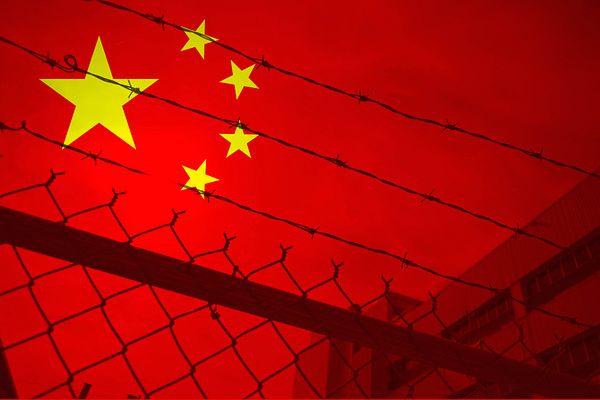Women’s rights in China have gained more attention as a consequence of the country’s altering demographic strategy. Given the country’s historically low birth rate and growing public scepticism of the three-child policy, the Chinese Communist Party finds itself in the process of seeking to increase birth rates to avert a future tsunami of social instability, but success is contingent on convincing women to support the government’s new pro-natalist agenda. Under the new policy, almost everyone in China will be entitled to have as many children as they desire. The new policy offers a variety of benefits, including a considerable decrease in unlawful pregnancy abortions, the near elimination of unregistered children, and a more balanced gender ratio. Recent demographic programmes have used a combination of incentives and penalties, emphasising the CCP’s difficulty about how much liberty to provide women for the sake of long-term stability.[1]

Given the political climate in Beijing at the moment, the real danger is that Chinese officials will undertake an aggressive pro-natalist campaign steeped in conventional values. With Beijing’s penchant for numerical objectives, it’s easy to see a 180-degree reversal of the anti-natalist techniques used during the decades of the one-child policy, with local Party officials assessed on their performance in increasing—rather than decreasing—birth rates in their jurisdictions.
The consequences would be enormous. This would entail Beijing not only abandoning what little remains of its own socialist feminist past, but also elevating conventional gender views to the level of state propaganda—exactly the sentiments at the root of the rest of East Asia’s demographic issues. This is precisely what has occurred in East Asia. In response to their own demographic challenges, Japan took this step in the 1990s, while South Korea and Taiwan did it in the early 2000s.
The United Nations considers that “high” estimates of China’s birth rates (about 1.7 children per woman) are roughly accurate but nevertheless indicates that China’s manpower advantage over the US peaked around 2000. Even if those relatively high birth rates stay constant over the next century, China’s manpower advantage over the US and its Pacific allies will rapidly erode during the next two decades. However, if birth rates continue to decline (about 1.2-1.3 children per woman), by 2080, China may have fewer males of combat age than the US’ Pacific alliance network. And if the United Nations is incorrect about China’s historical fertility rates, if demographers who argue that China’s population is 100 million to 150 million lower than official estimates are correct, then the date when the US and its potential allies outnumber their Chinese rivals could be as early as the 2050s.
This arithmetic helps explain why China’s officials made such a dramatic U-turn. If the policy of one-child limits for Han Chinese people with exemptions for minorities or firstborn girls had been maintained, the total number of men of fighting age would have declined at a breakneck pace, and an increasing proportion of those men would have been members of ethnic minorities whom Chinese military planners may regard suspiciously when it comes to national security.
However, women have raised doubts about these plans. Xiong Jing, a Chinese feminist, told the Guardian. “What will they give up if they can’t attain everything?” Perhaps it’s about women’s rights.” “As soon as they want access to your uterus, they start sweet-talking you,” one netizen said last year in response to a state media hashtag that read #Eliminate Backward Concepts Like “Men Are Superior To Women” and “Beget Male Heirs To Carry On The Ancestral Lineage”.
The health-care alternatives accessible to Chinese individuals have already changed due to the implementation. A Washington Post investigation in December discovered that 12 hospitals in Shanghai, Beijing, and Guangzhou were no longer performing vasectomies, much to the chagrin of many young couples contacted. Although county-level health officials must approve contraceptive operations for both men and women, there are no formal prohibitions or specific limits on the practice. The CCP’s campaign of widespread forced sterilisation of Uyghur women, whose reproductive health and well-being play no role in the government’s pro-natalist efforts to boost “high-quality” births among Han Chinese residents, contrasts sharply with the de facto limits on these procedures.
The demographic issue has pushed the government to update regulations that affect women’s rights on a much larger level in areas beyond reproductive rights. The three-child policy is expressly linked to a reform of the Law on the Protection of Women’s Rights and Interests, which will be amended for the first time since 2005, according to the official publication of China’s Supreme Court. The major changes are redefining sexual harassment, supporting employment discrimination regulations, and prohibiting forms of emotional abuse. The new laws also target employer limitations on marriage and childbearing.


Despite the CCP’s commitment to demographic policies that it sees as necessary for long-term stability, the party’s opposition to greater gender equality continues to impede the advancement of women’s rights. The censoring and shutdown of feminist social media accounts is regular, and prominent #MeToo activists like Peng Shuai and Xianzi are constantly blocked and silenced.[2] Given the near-complete absence of women at the top of the Party hierarchy, it’s all too easy to see the older men in charge of China doing the same. With the one-child policy, Party officials destroyed China’s society with a single ill-conceived demographic crash campaign. This is how they may duplicate the stunt a second time—in reverse. This will have a long-term negative impact on women’s rights, gender relations, and China’s future.

Leave a Reply